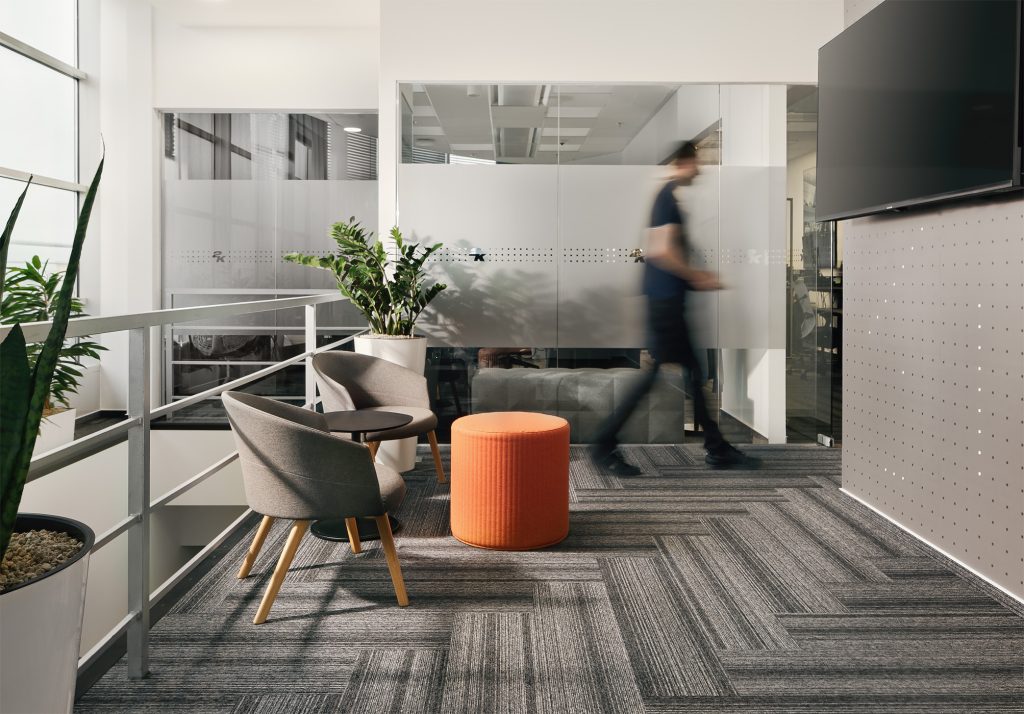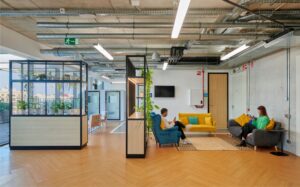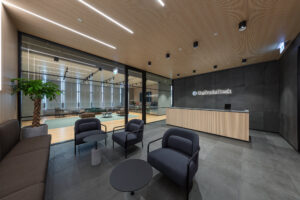The Rise of Flexible Office Space: Comparing US, Singapore, and Hong Kong Markets.

The evolution of flexible office space has fundamentally transformed the global commercial real estate landscape, creating new paradigms for how organisations approach workspace strategy and operational flexibility. The convergence of technological advancement, changing workforce expectations, and economic uncertainty has accelerated adoption of coworking and flexible workspace solutions across major markets worldwide. This comprehensive analysis examines the distinctive characteristics, growth trajectories, and market dynamics of flexible workspace adoption in the United States, Singapore, and Hong Kong, revealing both convergent trends and region-specific variations that define the future of commercial real estate globally.
Market Evolution and Growth Trajectories
The flexible office space sector has experienced unprecedented growth across all three markets, though with distinct patterns reflecting local economic conditions, regulatory environments, and cultural preferences that shape workspace adoption strategies. The pandemic-driven acceleration of flexible work arrangements has permanently altered expectations for workplace flexibility and operational agility.
In the United States, the flexible workspace market has matured from startup-focused coworking spaces to sophisticated enterprise solutions serving Fortune 500 companies seeking operational flexibility and cost optimisation. This evolution reflects broader economic trends toward asset-light business models and workforce mobility that prioritise adaptability over ownership.
Singapore’s strategic position as a regional hub has driven workspace solutions that accommodate multinational corporations establishing APAC presence whilst requiring flexibility to scale operations based on regional business development. The government’s Smart Nation initiatives have further accelerated adoption of technology-enabled flexible workspaces.
Hong Kong’s unique position as Asia’s financial centre has created demand for premium flexible office space that serves international businesses requiring prestigious addresses whilst maintaining operational flexibility to respond to regional economic volatility and regulatory changes.
Market Size and Penetration Rates
The United States leads in absolute market size for flexible office space, with over 6,000 locations nationwide representing approximately 2.2% of total office inventory. This penetration rate continues growing as enterprises embrace hybrid work models and startups seek cost-effective workspace solutions without long-term commitments.
Singapore demonstrates the highest penetration rate relative to market size, with flexible workspaces representing nearly 4% of total office inventory, reflecting the city-state’s role as a regional business hub and government support for innovative workspace concepts that attract international businesses.
Hong Kong’s flexible workspace market, whilst smaller in absolute terms, commands premium pricing that often exceeds traditional office rents by 20-40%, demonstrating strong demand for flexibility in one of the world’s most expensive office markets.
Regional Market Characteristics and Drivers
Each market exhibits distinct characteristics that influence flexible office space adoption patterns, pricing structures, and operational models, reflecting local business cultures, regulatory frameworks, and economic conditions that shape workspace demand.
United States: Enterprise Adoption and Scalability
The US market has evolved beyond traditional coworking concepts to encompass comprehensive workspace solutions serving enterprise clients seeking operational flexibility without compromising on quality or functionality. Major corporations increasingly utilise flexible spaces for project teams, satellite offices, and expansion testing.
Suburban and secondary market expansion represents significant growth opportunity as companies seek cost-effective alternatives to expensive urban cores whilst maintaining access to talent pools and transportation infrastructure. This geographic diversification supports business continuity and workforce distribution strategies.
Technology integration in US flexible workspaces leads globally, with advanced booking systems, space utilisation analytics, and integrated business services that enhance productivity whilst providing operational insights for both operators and tenants.
Singapore: Regional Hub Strategy and Government Support
Singapore’s flexible office space market benefits from government initiatives promoting entrepreneurship and international business establishment, with regulatory frameworks and incentive programmes that support flexible workspace development and adoption.
The focus on regional headquarters and multinational expansion creates demand for scalable workspace solutions that can accommodate rapid team growth whilst providing prestigious business addresses and comprehensive business support services.
Cross-border business facilitation through integrated services including legal, accounting, and regulatory support creates value-added propositions that extend beyond traditional workspace provision to comprehensive business establishment services.
Hong Kong: Premium Positioning and Financial Services Focus
Hong Kong’s flexible workspace market serves primarily financial services and professional services firms requiring prestigious Central and Admiralty addresses whilst seeking cost optimisation and operational flexibility in one of the world’s most expensive office markets.
The emphasis on premium amenities, concierge services, and networking opportunities reflects the market’s focus on high-value professional services and international business development that prioritise relationship building and brand positioning.
Cultural considerations including feng shui, privacy requirements, and hierarchy accommodation influence space design and operational protocols in ways that distinguish Hong Kong’s market from Western flexible workspace concepts.
Technology Integration and Innovation
The integration of advanced technology represents a critical differentiator in flexible office space operations across all three markets, with varying emphasis on different technological solutions reflecting local preferences and business requirements.
Smart Building Integration and IoT Systems
Advanced sensor networks and building automation systems enable optimised space utilisation, environmental control, and energy management that reduce operational costs whilst enhancing user experience through personalised environmental controls and seamless access management.
Real-time occupancy monitoring and space utilisation analytics provide valuable insights for both operators and tenants, enabling dynamic pricing strategies and space optimisation that maximise revenue per square foot whilst improving user satisfaction.
Mobile application integration provides seamless booking, payment, and access control whilst generating valuable data about usage patterns and preferences that inform operational improvements and service development.
Artificial Intelligence and Predictive Analytics
AI-powered systems analyse usage patterns, booking behaviours, and operational data to optimise space allocation, predict maintenance needs, and enhance customer experience through personalised recommendations and automated service delivery.
Predictive maintenance systems reduce downtime and operational disruptions whilst controlling costs through proactive intervention that prevents equipment failures and maintains optimal working conditions for tenants.
Dynamic pricing algorithms adjust rates based on demand patterns, seasonal variations, and competitive positioning, maximising revenue whilst maintaining competitiveness in rapidly evolving markets.
Business Model Evolution and Service Integration
The evolution of flexible office space business models reflects increasing sophistication in service delivery and revenue diversification that extends beyond basic space provision to comprehensive business support ecosystems.
Membership Tiers and Pricing Strategies
Sophisticated membership structures accommodate diverse client needs from individual entrepreneurs to large enterprises, with pricing models that balance accessibility with premium service delivery for higher-value clients seeking comprehensive workspace solutions.
Hybrid membership options combining physical space access with virtual office services, meeting room privileges, and business support services create revenue streams that extend beyond traditional space rental whilst providing value-added services.
Corporate membership programmes offer enterprise clients flexible terms, volume discounts, and customised service packages that address specific operational requirements whilst providing predictable revenue streams for operators.
Community Building and Networking Services
Professional networking events, educational programmes, and industry-specific meetups create value beyond workspace provision whilst fostering community engagement that improves member retention and satisfaction rates.
Mentorship programmes and business development support services particularly benefit startup and SME members whilst creating networking opportunities that enhance the overall ecosystem value proposition.
Cross-location networking capabilities enable global membership benefits that support international business development whilst creating competitive advantages for operators with extensive geographic footprints.
Market Challenges and Operational Considerations
Flexible office space operators across all three markets face common challenges including space utilisation optimisation, member retention, and competitive differentiation, though with region-specific variations in regulatory compliance and cultural adaptation requirements.
Space Utilisation and Revenue Optimisation
Balancing capacity management with member satisfaction requires sophisticated demand forecasting and dynamic space allocation systems that prevent overcrowding whilst maximising utilisation rates and revenue per square foot.
Hybrid work pattern adoption has created new challenges in predicting space demand whilst creating opportunities for flexible pricing models that accommodate varying usage patterns and member preferences.
Common area design and allocation strategies significantly impact member satisfaction and networking opportunities whilst influencing operational costs and space efficiency metrics that determine profitability.
Competition and Market Saturation
Increasing competition from both traditional operators and new market entrants requires continuous innovation in service delivery, technology integration, and value proposition development to maintain market position and member loyalty.
Corporate landlord entry into flexible workspace provision through in-house flexible solutions creates both competitive pressure and partnership opportunities for established coworking operators seeking expansion opportunities.
Market saturation in prime locations drives expansion into secondary markets and suburban locations that require different operational models and target customer strategies whilst maintaining brand positioning and service quality.
Cultural Adaptation and Local Market Requirements
Success in diverse markets requires sophisticated understanding of local business cultures, workspace preferences, and operational expectations that vary significantly between US, Singapore, and Hong Kong markets.
Design Preferences and Space Utilisation Patterns
American flexible office space design emphasises open collaboration areas, casual meeting spaces, and technology integration that supports informal interaction and agile work practices aligned with Silicon Valley startup culture.
Singapore’s multicultural workforce requires design flexibility that accommodates diverse working styles, cultural preferences, and religious observances whilst maintaining professional atmosphere suitable for international business operations.
Hong Kong’s hierarchical business culture influences space design through privacy requirements, status-appropriate amenities, and networking area configurations that support relationship building and professional advancement.
Regulatory Compliance and Operational Standards
US markets face varying local regulations regarding zoning, fire safety, and accessibility requirements that influence operational costs and design flexibility whilst requiring compliance expertise for multi-market expansion strategies.
Singapore’s stringent building codes and safety regulations require comprehensive compliance programmes whilst government innovation initiatives provide support for technology adoption and sustainable operations.
Hong Kong’s regulatory complexity including building management requirements, fire safety protocols, and commercial licensing creates operational challenges whilst premium market positioning enables cost recovery through higher pricing structures.
Sustainability and ESG Integration
Environmental sustainability has become increasingly important across all markets, with flexible office space operators implementing comprehensive sustainability programmes that align with corporate tenant ESG objectives whilst controlling operational costs.
Energy Efficiency and Environmental Performance
LED lighting systems with occupancy sensors and daylight harvesting capabilities provide significant energy savings whilst improving lighting quality and reducing maintenance requirements compared to traditional office lighting systems.
Advanced HVAC systems with zone control and air quality monitoring optimise energy consumption whilst maintaining optimal working conditions that support productivity and health outcomes for workspace solutions users.
Waste reduction and recycling programmes minimise environmental impact whilst demonstrating sustainability commitment that aligns with corporate tenant values and regulatory requirements in environmentally conscious markets.
Green Building Certifications and Standards
LEED, BREEAM, and local green building certifications provide credible sustainability validation whilst often commanding premium pricing and improving tenant attraction in markets where environmental performance influences corporate real estate decisions.
Carbon footprint measurement and reduction programmes enable operators to demonstrate environmental progress whilst identifying cost reduction opportunities through energy efficiency and waste minimisation initiatives.
Sustainable material selection and lifecycle management support circular economy principles whilst often providing superior durability and indoor air quality that enhance user experience and operational performance.
Investment Trends and Capital Market Evolution
The flexible office space sector has attracted significant institutional investment across all markets, though with different investor profiles and return expectations reflecting market maturity levels and growth prospects.
Institutional Investment and Market Maturity
US markets attract predominantly institutional capital including REITs, pension funds, and private equity investors seeking stable income streams from established operators with proven business models and extensive geographic coverage.
Singapore’s market benefits from government-linked investment vehicles and regional property developers seeking to capitalise on Asia-Pacific business growth whilst supporting Smart Nation innovation initiatives.
Hong Kong attracts primarily regional capital and family offices seeking exposure to Asia’s financial services growth whilst benefiting from premium pricing and prestigious location advantages.
Valuation Methodologies and Performance Metrics
Revenue per square foot and member retention rates have emerged as primary performance indicators, with successful operators achieving 15-25% premium pricing compared to traditional office space whilst maintaining 80%+ member satisfaction rates.
Technology investment and operational efficiency metrics increasingly influence investor evaluation, with operators demonstrating superior space utilisation and cost management achieving higher valuations and access to growth capital.
Geographic diversification and brand recognition provide valuation premiums whilst reducing risk through market and tenant diversification that supports stable cash flows and growth opportunities.
Future Trends and Market Evolution
The flexible office space sector continues evolving rapidly, with emerging trends including increased corporate adoption, suburban expansion, and technology integration that will define the next phase of market development.
Hybrid Work Integration and Corporate Adoption
Corporate adoption of workspace solutions for project teams, satellite offices, and overflow capacity represents the largest growth opportunity, with enterprises seeking flexibility without sacrificing quality or security requirements.
Integration with corporate real estate portfolios through management agreements and partnership structures enables operators to expand reach whilst providing corporations with comprehensive workspace strategies that balance cost, flexibility, and employee satisfaction.
Hybrid work policies create demand for neighbourhood-based flexible spaces that serve distributed workforces whilst maintaining corporate culture and collaboration capabilities through technology integration and programme coordination.
Technology Evolution and Service Integration
Artificial intelligence and machine learning applications will enable increasingly sophisticated space optimisation, personalised user experiences, and predictive service delivery that enhance satisfaction whilst improving operational efficiency.
Virtual and augmented reality integration for remote collaboration, training, and presentation capabilities will enhance flexible office space value propositions whilst supporting hybrid work arrangements and international business operations.
Blockchain technology applications for membership management, payment processing, and service verification may streamline operations whilst providing enhanced security and transparency for both operators and users.
Conclusion: Global Convergence and Local Adaptation
The rise of flexible office space across US, Singapore, and Hong Kong markets demonstrates both global convergence toward workspace flexibility and the critical importance of local market adaptation in achieving operational success and sustainable growth.
While technology integration, sustainability focus, and service diversification represent universal trends, successful operators must navigate distinct regulatory environments, cultural preferences, and competitive dynamics that define each market’s unique characteristics and requirements.
The future success of coworking and workspace solutions depends on balancing standardised operational excellence with local market sensitivity, creating scalable business models that can adapt to diverse market conditions whilst maintaining consistent service quality and brand positioning that attracts both local and international tenants seeking flexible, high-quality workspace alternatives.
FAQs
How do flexible office space penetration rates compare across US, Singapore, and Hong Kong?
What are the key differences in business models across these markets?
How has the pandemic affected flexible office space demand in each market?
What role does technology play in flexible workspace operations?
How do cultural factors influence flexible office space design and operations?
What sustainability features are most important in flexible office spaces?
How do investment patterns differ between these markets?
What are the main growth opportunities for flexible office space operators?
Sources and References
This analysis draws from leading flexible office space research organisations, market intelligence providers, and industry authorities across all three markets:
Industry Organizations and Professional Bodies
- Global Workspace Association (GWA): Industry Standards and Best Practices – https://www.globalworkspace.org/
- CoreNet Global: Corporate Real Estate Flexible Solutions
- International Facility Management Association: Workplace Strategy Research
- Urban Land Institute: Flexible Workspace Development Trends
Market Research and Analysis
- JLL Flexible Space Solutions: Global Market Intelligence
- CBRE Workplace Strategy: Flexible Office Market Analysis
- Cushman & Wakefield: Coworking and Flexible Space Research
- Savills Research: Flexible Workspace Market Trends
Technology and Innovation Sources
- PropTech Association: Workspace Technology Innovation
- Smart Building Research: IoT and AI in Flexible Workspaces
- Workplace Technology Magazine: Flexible Office Technology Trends
Research compiled and analysed as of September 2025. Flexible office space markets continue evolving rapidly with changing work patterns and technology adoption. For current market intelligence and strategic guidance, consult with specialised workspace solutions professionals and market research providers.



